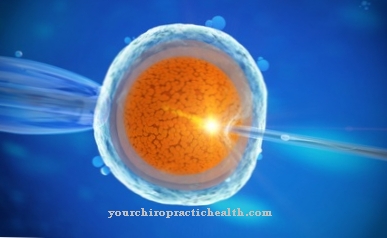The Structural body therapy (SKT) is one of the holistic body therapy methods that are particularly suitable for treating psychosomatic complaints. Body and soul are considered as a unit and the interactions in the therapeutic work are taken into account.
What is Structural Body Therapy?

Structural body therapy is a body psychotherapy method in which deep connective tissue massages are used to achieve a better straightening of the body, which also leads to an improvement in the mental state.
Body psychotherapy has long known about the interactions between body and soul and the effects of gravity and uses this knowledge for healing. Holistic techniques dissolve pent-up emotions and trauma in the body that often lead to illness. The structural body therapy has its origin in the method "Rolfing" by Dr. Ida Pauline Rolf (1896-1979).
She was an American biochemist and in the course of her research she discovered connections between chronic illnesses and body structure / posture. From this knowledge she developed her method, Rolfing, in which the deep connective tissue structures of the body are changed in 10 steps and initiate a positive psychological change.
Function, effect & goals
Structural body therapy is suitable for all people who are interested in more inner and outer liveliness and who want to be straightened up in the truest sense of the word.
It is particularly suitable for people who use their body as a tool, such as B. actors, dancers, musicians and athletes, managers and politicians. It is not symptom-oriented, but has positive effects on various health problems:
- functional disorders of the musculoskeletal system
- Back pain, herniated disc, cervical / lumbar spine syndrome, curvature of the spine
- Joint problems, bad posture
- chronic muscle tension
- psychosomatic complaints, breathing difficulties
- Anxiety, depression
- psycho-vegetative disorders, stress, trauma
Body-oriented methods see body and mind as an inseparable unit and feelings as flowing energy that normally flows by itself. But if this flow is hindered, there is a stagnation of the life force with various effects on the body consciousness and pathogenic consequences. The human body consists largely of connective tissue. In structural body therapy, the connective tissue and the muscle membranes (fascia) are mobilized and changed.
Muscle strength is transmitted in the body through the fascia. When the muscular connective tissue is elastic and pliable, body awareness and coordination improve. With overload and stress, the elasticity of the muscles is lost, the body hurts and becomes immobile. The numerous deformations in life leave traces in the tissue. Chronic stress, intervertebral disc damage, rheumatic diseases and arthrosis are reflected in the glued layers of fascia and connective tissue. This is where structural body therapy comes in, counteracts these blocking forces and brings the body back into harmony and balance by straightening up.
In 10 consecutive sessions, the therapist and the client try to re-establish a new body equilibrium by loosening chronically shortened muscles and stuck connective tissue. By carefully counteracting vegetative stress symptoms, a gentle liberation from postural restrictions and negative thought patterns takes place. Structural body therapy is not only suitable for people with health impairments, but also for healthy people who want to experience more inner mobility and joy of life.
The therapy consists of 10 individual sessions that are systematically coordinated. Depending on the course of the therapy, the 10 basic sessions can be increased by a further 1 to 5 sessions. The costs for one session are approx. 90 € for 1.5 hours, the complete costs for 10 sessions are approx. 795 €. In each of the individual sessions, a personal conversation takes place first, followed by a visual examination of the body structures while walking and standing. During the treatment, which usually takes place lying down, the fasciae are loosened by applying sensitive and targeted pressure.
Body therapy methods are becoming more and more important because, unlike symptom-oriented conventional medicine, they better take into account the various effects of our life on body and soul and begin treatment there.
You can find your medication here
➔ Medicines for back painRisks, side effects & dangers
There is still no sound scientific evidence for most body therapies, but they are often covered by health insurance companies. Most body therapy methods can look back on decades of positive experiences with their clients.
In today's high-tech medicine, too little time and attention is given to people, which is why many feel drawn to alternative therapies that look at people holistically and take their time. Body therapies are generally to be viewed as positive, but should not replace a doctor's visit in the event of serious complaints. In the event of complaints, it is better to see a doctor first to find out the causes, before considering body therapy. Even if structural body therapy is not sufficiently successful, it is better to see a doctor in order to find out possible causes of the symptoms and treat them sensibly.
Another risk is that the term body therapy is not protected and, as a method of self-awareness, is not subject to any restrictions on exercise. If body therapies are to be used to heal and alleviate illnesses and complaints, they may only be practiced by doctors, alternative practitioners, psychological psychotherapists and child and adolescent psychotherapists. Anyone who does not want to take the risk of insufficiently trained therapists should find out about the therapist's training before treatment.



























